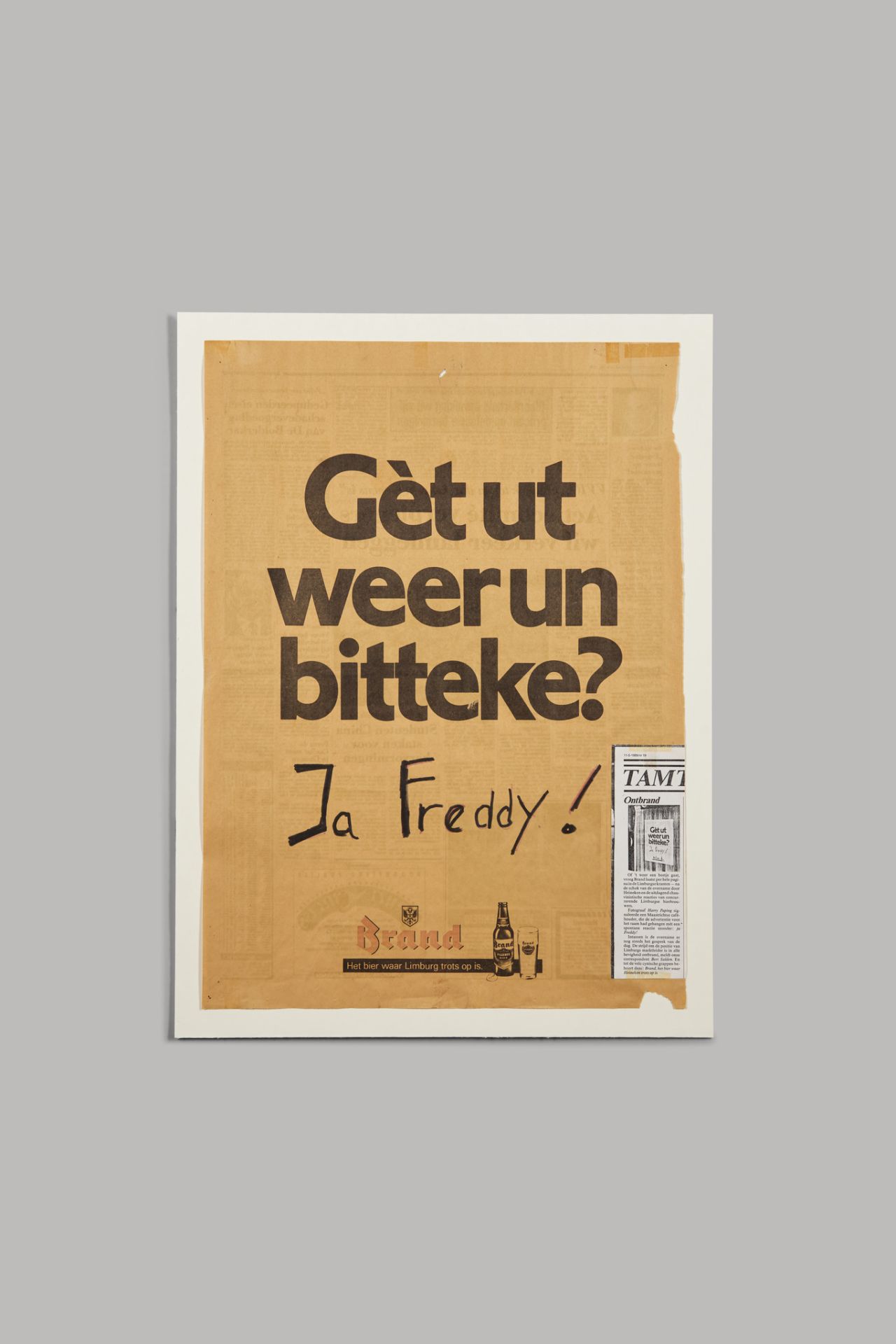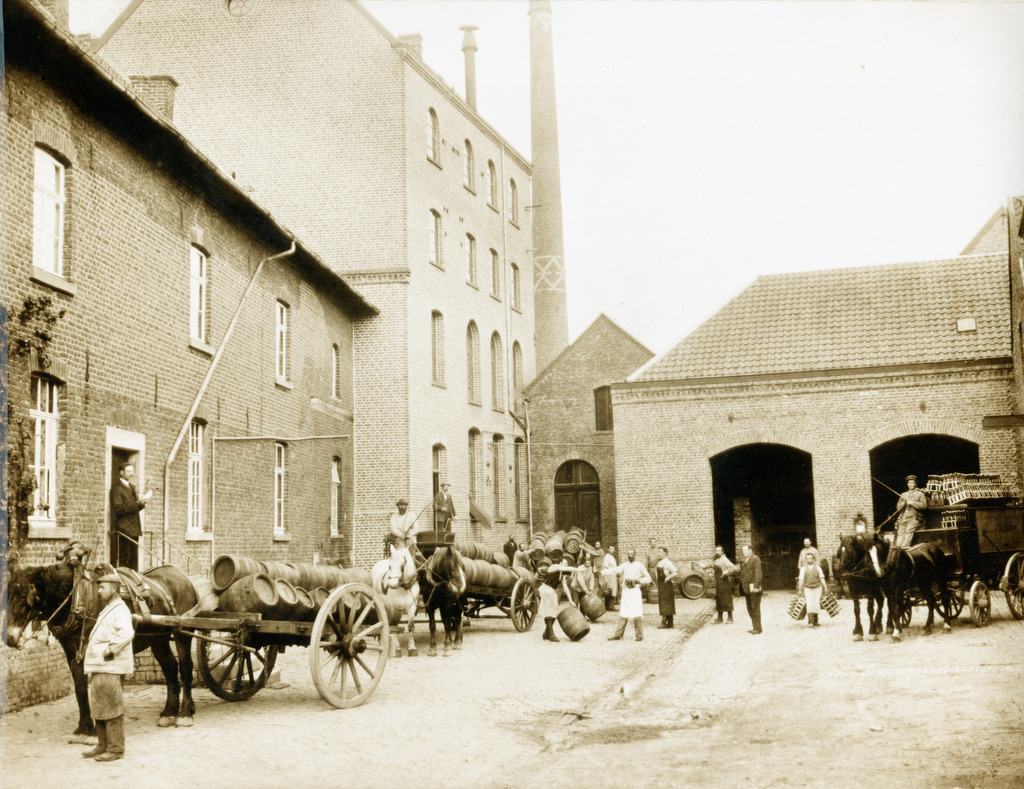INFO
Advertisement on the acquisition of the Brand Brewery by Heineken
1989
Offset print and felt-tip pen on paper
h 74.3 x w 57.5 cm

Feeling any better?
20 April 1989: Heineken’s takeover of Koninklijke Bierbrouwerij Brand NV in Wijlre was a fact. A shock wave washed throughout the Dutch province of Limburg, first and foremost among the 220 employees. It was also the talk of the day in pubs: not so much because of possible redundancy but mainly out of fear of a loss of identity, of ‘Limburg pride.’
It was also quite a big deal: the Brand brewery had long held the distinction of being the ‘oldest [beer] in the Netherlands.’ That its medieval origins have since been successfully disputed – Brand appears to have emerged from an 18th-century family brewhouse in Wijlre – did not alter this.
Contemporaries
In 1871, Frederik Edmond Brand purchased the family brewhouse with taproom in question to continue it as the De Kroon Brewery. Like his contemporary Gerard Adriaan Heineken, who had taken over the Den Hoybergh Brewery in Amsterdam seven years earlier, Brand was not a brewer by birth, but a railway engineer. The brand name Brand dates to 1922, when the brewery was renamed ‘Brand’s bierbrouwerij “De Kroon.”’ With a major renovation, Frederik Brand’s grandsons prepared their ‘Export Brewery’ for the future in 1930, supplying much of the southern Netherlands with traditionally brewed lager.

Showpiece
With this takeover, Heineken had every reason to respect those traditions. Per the agreement, the new owner guaranteed staff expansion while maintaining strategy and identity. Brand’s family character soon proved to be an excellent match for Heineken. And it did not take long before Brand beer made a true revival far beyond its native region as a Heineken ‘craft-showpiece,’ including a microbrewery for speciality beers in the old rectory in Wijlre.
Droste effect
However, on 21 April 1989, Limburg readers of the morning paper did not yet know all this. To calm tempers, three weeks later Heineken placed a full-page ad in the paper with the text ‘Gèt ut weer un bitteke?’ (In Limburg dialect: Feeling any better?). The owner of a Maastricht café hung this copy behind the window, with the answer ‘Yes Freddy’ written in felt-tip pen. In the photo accompanying the attached newspaper article, press photographer Harry Paping shot the ad on the spot, creating a funny Droste effect.
By then, the news had caught up with reality and Freddy (Alfred Henry) Heineken resigned as chairman of the board. The official takeover of Brand was therefore signed by his successor, Gé van Schaik.